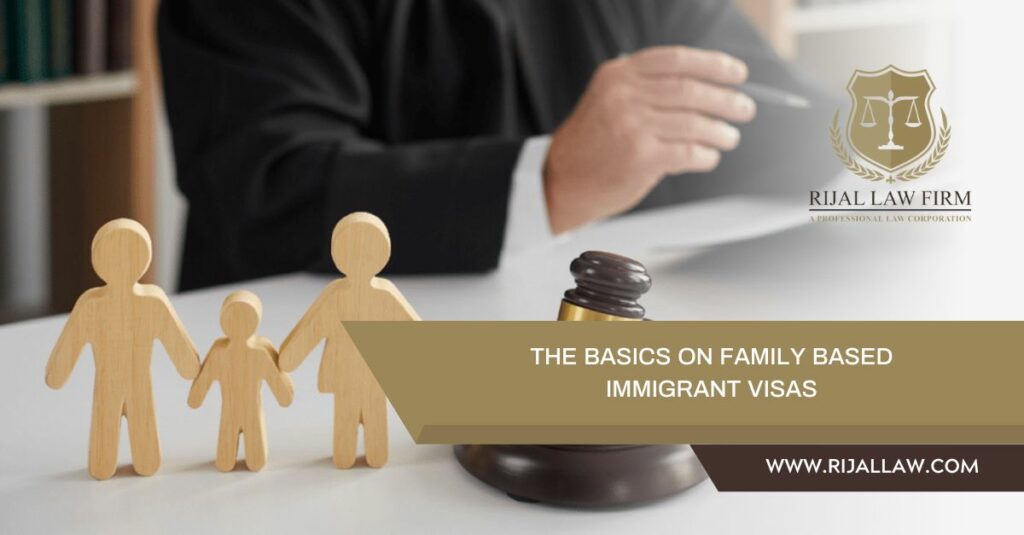If you want to move from your country to be closer to your family, you have a series of options if you have a close family relationship with a U.S. citizen or permanent resident. Even though reuniting families is a cornerstone of the American legal system, the immigration process, quotas, and paperwork can be stressful and frustrating for both immigrants and Americans. Fortunately, there are several immigrant visa options available for different situations.
In the United States, family-sponsored immigrants who are not immediate relatives can get one of the 480,000 visas available each year. Once this number is reached, it’s too bad that family members can’t apply for a visa until October 1 of the next fiscal year. Even then, they have to wait while their visa application is evaluated for their category.
The United States Immigration Structure Is Based On Family Reunification.
The current immigration system, including the “preference system” or preference classification that admits new immigrants based on family or employer sponsorship, was established with the passage of the Immigration and Nationality Act of 1965.
About 65% of all legal immigration occurs within families, and over the past decade, family-based immigration has accounted for nearly 85% of all new arrivals to the United States. More than half of all recent green card recipients from Asia were sponsored by family members, and the same was true for over 80% of green card recipients from Mexico.
When thinking about the possibility of getting back together with your family, there are many ways to go about it, one of them being immigration visas. Keep reading in order to learn more about them.
Fiancé Visa K-1
One of the most popular choices, this visa can bring together a US citizen and a fiancé from another country before they get married in the US or in the other country. The sponsor, who is usually the fiancé, must also show that the relationship is serious by making promises like meeting in person before the fiancé comes to the US. Each visa application is looked at and judged on its own merit, and each person is asked about their income, how long they plan to stay in the US, and if their relationship is real. One of the most important rules with this visa is that the couple has only 90 days to get married after the immigrant fiancé arrives in the US. This visa can’t be changed or renewed without going back to the country from which the person is leaving.
Visas for Close Family Members
People who are already married to US citizens, as well as their minor children and parents, have an easier time getting into the US because these visas can be used by any US citizen who meets the residency and financial requirements for sponsorship.
V-Visa
A US Resident Alien, also known as a green card holder, who has a spouse or child living abroad may bring their family to the US before receiving their own Resident Alien status with this type of visa. This visa has the same basic requirements for status as other temporary visas such as the K-3 (next to arrival), but in order to get V status, an Immigrant Relative Petition must have been filed for the overseas family member. This petition must have been pending for at least 3 years, and a regular green card is not an option. This visa helps make up for the long waits of at least five years that many people had to go through when they first applied for resident alien status for close relatives of a green card holder.
Visitor Visa K-3
A US citizen can bring a spouse or child from outside the US to live with their family in the US in the hopes of getting US Resident Alien status with the help of this temporary visa. There are strict rules about who can get these visas, and many of them are shared with the V-Visa. For example, the person who wants one must have a certain income, be married and have children who were either born to the US citizen before sponsorship, adopted before the child turned 16, or stepchildren of the citizen parent before the child turned 18. After two years, nationals can apply for their final resident alien status in the US or at a US Embassy overseas.

Get The Best Advice Available
It is important for you to take into account all the particular benefits of each option. The decision should be made after carefully weighing how your particular situation will affect the outcome.
Call Rijal Law Firm as soon as possible if you find that you need advice on how to file your request, if you need to file an extension of stay for your parents, or if you are late in filing a change of status for yourself. We will assist you in figuring out the solution to the problem.

